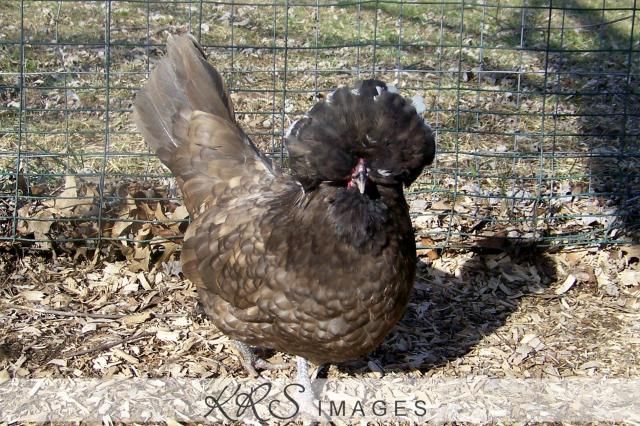I love them, and they are even friendly to hubby!
Navigation
Install the app
How to install the app on iOS
Follow along with the video below to see how to install our site as a web app on your home screen.
Note: This feature may not be available in some browsers.
More options
You are using an out of date browser. It may not display this or other websites correctly.
You should upgrade or use an alternative browser.
You should upgrade or use an alternative browser.
Polish Thread!!!!!!!!!!!!!!!!!!!!
- Thread starter chickenman98
- Start date
nessa.morg
Songster
- Jun 26, 2018
- 781
- 1,835
- 213
My little guy...or girl im not sure yet...is my special little one! Her/His head feathers is super uneven and the beak is off centered and slightly slanted. The top beak is severely over arched with an even more severely arched nostril area. The bottom beak is as straight as a board so his/her beak is not even close to closing. If you are looking at him/her from the front the right side of his or her face is more full then the left. All of these imperfections make him/her even more perfect!! I love this baby so much and would not ever trade her for a "perfect" polish.






With those pointy crest feathers, i predict a cockerel.My little guy...or girl im not sure yet...is my special little one! Her/His head feathers is super uneven and the beak is off centered and slightly slanted. The top beak is severely over arched with an even more severely arched nostril area. The bottom beak is as straight as a board so his/her beak is not even close to closing. If you are looking at him/her from the front the right side of his or her face is more full then the left. All of these imperfections make him/her even more perfect!! I love this baby so much and would not ever trade her for a "perfect" polish.
View attachment 1503333View attachment 1503334View attachment 1503335
nessa.morg
Songster
- Jun 26, 2018
- 781
- 1,835
- 213
Yeah I agree but im still praying its a she!With those pointy crest feathers, i predict a cockerel.
I’ve been searching for large Fowl Dun Polish for years (2012). My search has brought me here. Can someone help?
I’ve been searching for large Fowl Dun Polish for years (2012). My search has brought me here. Can someone help?
Hope you find them. BTW what do they look like? Do you have a photo?
I have not had them so no but there are some online
Would love to see a photo if you find some. Wondering what that color is like.
Would love to see a photo if you find some. Wondering what that color is like.
From what I can tell Dun is a chocolate gene in any breed and supposedly rare
Polish Chickens Breeding Chocolates | BackYard Chickens
Dun is not the same as platinum, dun is the name of the incompletely dominant gene that produces chocolate and khaki. The chocolate gene is different and breeds true. As far as I know, the chocolate gene is not present in any flocks in the US I must not have been clear, I never said that Dun is the same as platinum.
- Poultry Genetics -Mutations - Edelras
www.edelras.nl/chickengenetics/mutations1.html
Yet the Dun gene (I D) is similar to Blue (Bl), ie incompletely dominant, where heterozygotes (I D /i +) produce a darker Dun colour, yet the homozygotes (I D /I D) produce a much paler Dun colour. The Dun genetics are explained at MSN Polish Chickens website: The difference in Dun expression are shown in the OEGB varieties:

New posts New threads Active threads
-
Latest threads
-
Can favus turn respiratory? Treatment?
- Started by micstrachan
- Replies: 0
-
Still making a mess with port feeders
- Started by EmmaDonovan
- Replies: 4
-
-
How do you make Jump To links on a single page article?
- Started by nuthatched
- Replies: 2
-
Empty Space Home Page on Laptop
- Started by Lacy Duckwing
- Replies: 0
-
-
Threads with more replies in the last 15 days
-
-
-
pollipazzi's 365 project
- Started by pollipazzi
- Replies: 124
-
BYC's 52-week Photography Challenge. Week 1: (Jan 5-11, 2026). Theme: SUNSET
- Started by azurbanclucker
- Replies: 101
-
I'm Probably Gonna Need My Hand Held Quail Hatch-A-Long
- Started by Sefirothe
- Replies: 98
-
×

